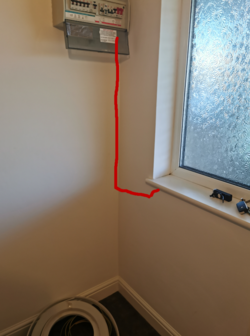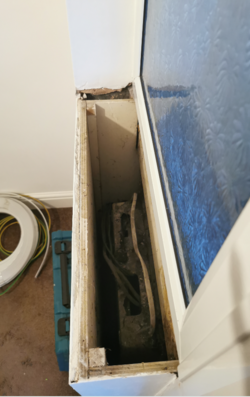B
bookworm1632
I've been told I need to upgrade the main earth bonding to 16mm.
The consumer unit is on the wall adjacent to the externally mounted incoming supply box - I basically need to run the earth wire down the corner about 1m and then across the side wall about 30cm then through and into the back of the supply box. 15cm of the horizonal run would thus be outside a safe zone.
Now I'm looking at the regs on buried cables and although they seem to be intended for power cables, I can't find any separate details on earth only cables, other than one of the exemptions listed allowing cables to be run outside of safe zones, is where the cable is either contained within earthed sheaving or earthed conduit. Given that an earth cable would be effectively no different to an earthed conduit from an electrical safety point of view given that all earth cables and earthed fixtures are always at the same potential (or should be) within a property. But that's logical and doesn't necessarily mean it's right.
The other factor is the requirement for buried cables to be protected by RCD's - clearly not something that can apply to an earth only cable, which makes me think that safe zones don't really apply here.....
Thoughts?
The consumer unit is on the wall adjacent to the externally mounted incoming supply box - I basically need to run the earth wire down the corner about 1m and then across the side wall about 30cm then through and into the back of the supply box. 15cm of the horizonal run would thus be outside a safe zone.
Now I'm looking at the regs on buried cables and although they seem to be intended for power cables, I can't find any separate details on earth only cables, other than one of the exemptions listed allowing cables to be run outside of safe zones, is where the cable is either contained within earthed sheaving or earthed conduit. Given that an earth cable would be effectively no different to an earthed conduit from an electrical safety point of view given that all earth cables and earthed fixtures are always at the same potential (or should be) within a property. But that's logical and doesn't necessarily mean it's right.
The other factor is the requirement for buried cables to be protected by RCD's - clearly not something that can apply to an earth only cable, which makes me think that safe zones don't really apply here.....
Thoughts?










